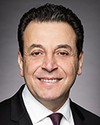Thank you, Chair, and thanks to the witnesses, all three of you, for appearing.
Looking at Mr. Thériault's original motion for this study, there are two parts. First is to look at the improvements that have been put in place since tightening Health Canada's rules. You've touched on some of those. Second is to look at the feasibility of establishing a central breast registry. I think both parts of this motion are important. We want to keep the focus on what the problem is that we are trying to solve and whether the solution is the registry or something else.
The key question is whether a registry could effectively add to our capacity to monitor and respond to safety issues around breast implants, if not other medical devices. I see the answer to that question is not straightforward due to the many limitations that you have brought forward.
I want to go back to the first part, mandatory reporting by hospitals and post-marketing surveillance.
Mr. Boudreau, can you give a brief overview on how much difference these provisions have made? Recognizing that we don't know what we don't know, is there a sense that the safety signal reporting has improved, that there's more exchange, that we're comparable to other nations with a registry? I'm sure this would have been the subject of the best brains exchange that you referred to. Maybe you could give me a sense of that.



